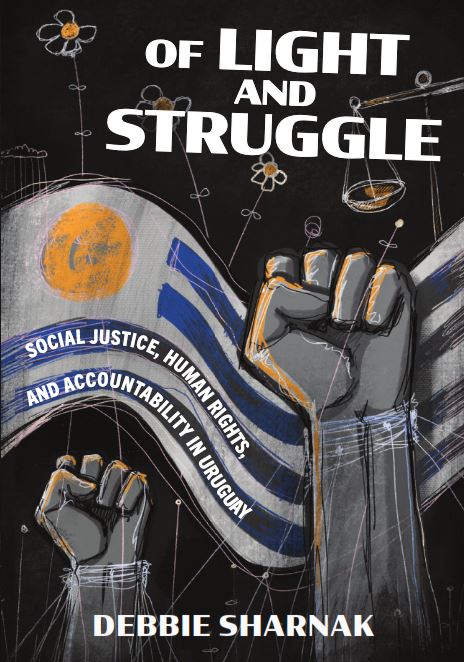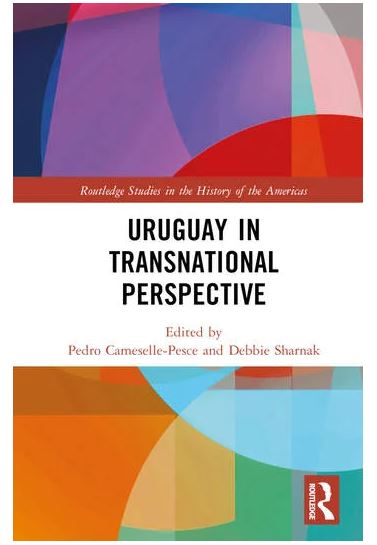Of Light and Struggle, Social Justice, Human Rights, and Accountability in Uruguay
During the country’s dictatorship from 1973 to 1985, Uruguayans suffered under crushing repression, which included the highest rate of political incarceration in the world. In Of Light and Struggle, Debbie Sharnak explores how activists, transnational social movements, and international policymakers collaborated and clashed in response to this era and during the country’s transition back to democratic rule.
At the heart of the book is an examination of how the language and politics of human rights shifted over time as a result of conflict and convergence between local, national, and global dynamics. Sharnak examines the utility and limits of human rights language used by international NGOs, such as Amnesty International, and foreign governments, such as the Carter administration. She does so by exploring tensions between their responses to the dictatorship’s violations and the grassroots struggle for socioeconomic rights as well as new social movements around issues of race, gender, religion, and sexuality in Uruguay. Sharnak exposes how international activists used human rights language to combat repression in foreign countries, how local politicians, unionists, and students articulated more expansive social justice visions, how the military attempted to coopt human rights language for its own purposes, and how broader debates about human rights transformed the fight over citizenship in renewed democratic societies. By exploring the interplay between debates taking place in activists’ living rooms, presidential administrations, and international halls of power, Sharnak uncovers the messy and contingent process through which human rights became a powerful discourse for social change, and thus contributes to a new method for exploring the history of human rights.
By looking at this pivotal period in international history, Of Light and Struggle suggests that discussions around the small country on the Río de la Plata had global implications for the possibilities and constraints of human rights well beyond Uruguay’s shores.
The book was awarded the Best Book in the Humanities for the Latin American Studies Association, Southern Cone Section, and was selected as a 2023 Outstanding Academic Title by Choice magazine.
Full bibliography
At the heart of the book is an examination of how the language and politics of human rights shifted over time as a result of conflict and convergence between local, national, and global dynamics. Sharnak examines the utility and limits of human rights language used by international NGOs, such as Amnesty International, and foreign governments, such as the Carter administration. She does so by exploring tensions between their responses to the dictatorship’s violations and the grassroots struggle for socioeconomic rights as well as new social movements around issues of race, gender, religion, and sexuality in Uruguay. Sharnak exposes how international activists used human rights language to combat repression in foreign countries, how local politicians, unionists, and students articulated more expansive social justice visions, how the military attempted to coopt human rights language for its own purposes, and how broader debates about human rights transformed the fight over citizenship in renewed democratic societies. By exploring the interplay between debates taking place in activists’ living rooms, presidential administrations, and international halls of power, Sharnak uncovers the messy and contingent process through which human rights became a powerful discourse for social change, and thus contributes to a new method for exploring the history of human rights.
By looking at this pivotal period in international history, Of Light and Struggle suggests that discussions around the small country on the Río de la Plata had global implications for the possibilities and constraints of human rights well beyond Uruguay’s shores.
The book was awarded the Best Book in the Humanities for the Latin American Studies Association, Southern Cone Section, and was selected as a 2023 Outstanding Academic Title by Choice magazine.
Full bibliography
Uruguay in Transnational Perspective
Most of the world knows Uruguay only for its soccer team, or its vaunted title as the "Switzerland of South America," an enduring moniker given to the country for its earlier social welfare policies and relative stability. Even many scholarly narratives of Latin America fail to integrate the country into historical accounts, reducing the country to, as one historian has explained, "a periphery within the periphery that is Latin America."
This volume challenges that characterization, taking one of the most innovative small states in the region and analyzing its transnational influence on the world. Uruguay in Transnational Perspective takes a broad look at the country’s three-hundred-year history, connecting imperial practices and resistance, Afro-Latin movements, and feminist firebrands, among others to understand how the country and its citizens have influenced and shaped regional and global historical narratives in a way that has thus far been overlooked.
With a true collaboration between scholars of the Global North and Global South, the volume is both transnational in its scholarly focus and its production. Its interdisciplinary nature offers a broad range of perspectives from leading scholars in the field to re-evaluate Uruguay’s impact on the global stage.
This volume challenges that characterization, taking one of the most innovative small states in the region and analyzing its transnational influence on the world. Uruguay in Transnational Perspective takes a broad look at the country’s three-hundred-year history, connecting imperial practices and resistance, Afro-Latin movements, and feminist firebrands, among others to understand how the country and its citizens have influenced and shaped regional and global historical narratives in a way that has thus far been overlooked.
With a true collaboration between scholars of the Global North and Global South, the volume is both transnational in its scholarly focus and its production. Its interdisciplinary nature offers a broad range of perspectives from leading scholars in the field to re-evaluate Uruguay’s impact on the global stage.

